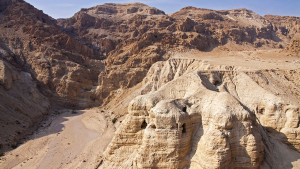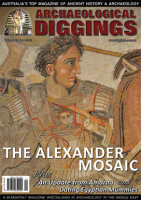Rivers of Babylon, The Rastafarian song originally recorded by The Melodians in 1970, was covered by vocal group Boney M in 1978, and went on to become one of the UK’s biggest-selling single records. Its lyrics echo the ancient cries of the psalmist of the Bible in Old Testament times. It’s a message that resonates deeply with Rastafarian ideology of the struggle of living under oppression and a longing for social justice.
Psalm 137 in the Bible, the inspiration for the song, portrays the Judean captives in deep mourning over the destruction of their beloved city, Zion, better known as Jerusalem, at the hands of the Babylonians in the sixth century b.c.
It tells of the captives’ torment as their Babylonian oppressors demanded of them joyful songs of Jerusalem whilst they lamented her destruction. The Judeans are said to have vowed that if they forget the joys of Jerusalem, both the work of their hands and the song of their mouths would be forever lost:
"By the rivers of Babylon we sat and wept when we remembered Zion. There on the poplars we hung our harps, for there our captors asked us for songs, our tormentors demanded songs of joy; they said, ‘Sing us one of the songs of Zion!’
“How can we sing the songs of the Lord while in a foreign land? If I forget you, Jerusalem, may my right hand forget its skill. May my tongue cling to the roof of my mouth if I do not remember you, if I do not consider Jerusalem my highest joy.”
This psalm expresses the raw emotions of a broken and captive people, still hurting over the loss of their homeland, their city and their very way of life. The text provides a vivid impression of their emotional state as they cry for the destruction of Babylon through the smashing of her infants against rocks.
It is often stated that time heals a multitude of wounds and it was no different for the Judean captives in Babylon. At the time of their captivity and destruction of Jerusalem, they were angry and full of vengeance toward the Baby- lonians. Within 25 years, however, they had learnt to live side by side with their enemies, forming families within a cohesive society and carrying on economic activity to their mutual advantage. It appears that, although the political and religious powers were in conflict, the people put aside their differences in order to live with one another in harmony; a lesson from history that our present world would do well to learn.
The rise of the Neo-Babyloanian Empire
The Neo-Assyrian Empire was the most powerful force in the Middle East for much of the seventh century b.c., but major defeats to the Babylonians at Ninevah in 612 b.c. and Harran in 610, left the former superpower shattered and scrambling for survival. The Assyrian king Ashur-uballit II subsequently sought the support of Pharaoh Necho II of Egypt to defend the last Assyrian stronghold, Carchemish. As the Egyptian forces were making their way towards Carchemish to support the Assyrians, Pharaoh Necho II requested permission from Josiah, king of Judah, to pass through Judean territory.
Josiah’s refusal ignited a battle between the Egyptians and the Judeans at Megiddo in 609 b.c. The biblical books, 2 Chronicles and 2 Kings, record the Egyptian archers inflicting an injury to Josiah at the battle, his request to be taken back to Jerusalem and his subsequent death, leaving the Egyptians a clear path to unite with the Assyrians against the Babylonians at Carchemish. At the battle of Carchemish in 605 b.c., the Babylon army overpowered the joint Assyrian and Egyptian forces, destroying what was left of the Assyrian kingdom and in the words of its king Nebuchadnezzar, “The Egyptian army withdrew before me.” From this time forward, Babylon began taking control over the Levant and the majority of the Middle East.
The Destruction of Jerusalem
The allegiance of the Judeans swayed as the control over the Levant began to shift from the Egyptians to the Babylonians. After the battle at Carchemish, Jehoiakim, king of Jerusalem, swore allegiance to Nebuchadnezzar by sending as tribute to him, temple vessels and members of the royal family, along with many of his nobles and promising young men, full of wisdom and knowledge. Nebuchadnezzar continued to return to Jerusalem for the next three years (604–602 b.c.) to levy tribute from his vassal kingdom. Then, as recorded in 2 Kings 24:1, just three years after becoming vassal to Nebuchadnez- zar, Judah’s allegiance to Babylon began to wane as they witnessed Nebuchadnezzar’s attempt to invade Egypt in 601 b.c., fail and draw heavy losses on both sides.
This action was not without consequence, as recorded in the Babylonian chronicles. Once they had regained strength, Nebuchadnezzar returned to Hatti land—the Levant—on March 15–16, 597 b.c. (the 2nd of Adar), in the seventh year of his reign and besieged Jerusalem. Jehoiakim had since passed away and the Babylonians took his son Jehoiachin, his family, officials and courtiers, and 10,000 servicemen comprising of soldiers, craftsmen and artisans back to Babylon as captives, leaving only the rural population behind. In his stead, Nebuchadnezzar appointed Jehoiachin’s uncle, Zedekiah, as vassal king, who soon after also rebelled, bringing upon Judah yet another attack which resulted in the destruction of Jerusalem and the captivity of 832 people. If that was not enough, 2 Kings 25:22–26 records that just four years after Jerusalem’s fall, the appointed governor Gedeliah was murdered by a dissident party which brought yet another 745 Judeans captive back to Babylon, making a total of four major deportations of Judeans to Babylon.
Prisoners of War
The Neo-Babylonian Empire adopted a very similar prisoners of war policy to that of their predecessors, the Neo-Assyrians. The Neo-Assyrian Empire, which controlled the Mesopotamian region from 934 b.c. to 609 b.c., had strict policies and punishments when it came to rebellion. Their punishment was political surrender by persuasion, intimidation or military force, and the conquest was often swiftly followed by the imposition of a treaty of “eternal vassalage.” This predominately entailed the enthronement of a vassal king and subsequent large- scale deportation. The Babylonians were all too familiar with this policy as Sennacherib, king of Assyria, in the latter half of the seventh century b.c., dispersed parts of the Babylonian population to various countries as a punishment for disloyalty to the Assyrian throne. Along with mass deportation, the Assyrian kings would often provide logistical support to a vassal king to assist their control over the vassal kingdom. As mentioned earlier, this became the policy the Neo-Babylonian Empire took against its subjects during the first quarter of the sixth century b.c., including Judah.
Rural Deporters in Babylon
The evidence needed to understand daily life of Judean deportees in Babylonia came with the discovery of a number of cuneform tablets. These tablets, written in Akkadian, record the name of a region titled “Town of the Judeans,” located in the Nippur-Keš-Kakara triangle. The identification of the town as a Judean settlement is done through a specific study of the Akkadian language called orthography. The system of Akkadian grammar uses gentilics, a suffix placed after the name of geographic regions, to denote an ethnicity. In the case of Town of the Judeans, the standard Akkadian gentilic ending (-a-a) is suffixed on the geographical term to produce URU sa LU ia-a-hu-du-a-a Town of the Judeans. The majority of contracts drafted from this town follow the same structure: the notation at the end of the tablet that records the name of the scribe, the date on which the transaction took place and the place in which the document was composed. The town’s earliest attested date is drawn from a text ascribed to Nebuchadnezzar‘s thirty-third year (572 b.c.), 15 years post the destruction of Jerusalem. This means we have very early attestations of a town community specifically set up to accommodate Judean prisoners of war.
Over time, the orthography of Town of the Judeans changes. The construction began with the form alu sa LU Yahudaia as it appeared in the earliest text dated to 572 b.c., but by the time of our second oldest text, dated at 561 BC during the time of the babylonian king Amel-Marduk I, the orthography changes to the toponym URU ia-a-hu-du. Because all subsequent attestations of the toponym al-Yahudu also lack the gentilic ending (a-ia), it is suggested that this indicates a change to an established Babylonian social and economic structure for the town of the Judeans. This demonstrates that the integration into Babylonian society and customs is well-established 24 years after the destruction of Jerusalem. Along with the integration into Babylonian social and economic life, there is evidence that the town had become a multi-cultural community and the changed toponym had retained the markers reflecting the origin of its original settlers.
Evidence for the multicultural diversity within Al- Yahudu comes from a study of specific names found in the corpus of texts. Within the texts from Al-Yahudu, there are approximately 138 of 400 individuals who bear the diagnostic YHWH theophoric element. A theophoric element is a “divine” meaning attached to a name to con- nect the individual with the respective god. In the case of Judeans, they would prescribe a YHWH theophoric ele- ment to their names because YHWH was their patron God. Using this as an identifying marker of Judean ethnicity, Judean names account for 34.5 per cent of the total names spanning 95 years, from 572 b.c. to 477 b.c. This means that the town that originated as a settlement for Judean captives became both multi-cultural and well integrated into Babylonian society.
An analysis of the marriage contracts from Al Yahudu reveals to what extent the customs of the Babylonians had become norms within the town. The marriage contract of a woman named Nanaya-kanat is an example of such a document following the standard Babylonian formula. In Neo- and Late-Babylonian marriage contracts, the culturally assumed marriage rights are referred to in the first lines of the document. They record an oral exchange between the groom (or his father) and the bride’s father (or agent). Nanaya-kanat’s marriage contract follows this standard formula of “Please give me X, your daughter/sister (the batultu/*nu’artu), in marriage; let her be my wife. This was followed by: F/B/M agreed to the proposal and gave him X, his/her daughter/sister (the batultu/*nu’artu), in marriage.” Also implied in these statements are the Babylonian customs of non-negotiable rights, obligations and the responsibilities of marriage. This consists of recording the results of negotiated conditions, such as divorce ar- rangements or the particulars of dowries or other payments to be transferred. Nanaya-kanat’s contract follows this structure through lines 11–18, where her divorce right to six minas of silver, her marriage and sexual obligations, and the consequence of adultery expressed by the clause, “she will die by the iron dagger” are present. In addition, only in the Neo-Babylonian period do we find clauses dealing with adultery, thus this is clearly following the Neo-Babylonian formula. The conformity to the structure indicates that this community was integrated with, and practicing, the Neo-Babylonian legal customs within the scope of public declarations and contracts.
Also implied within the contract is evidence of integration with Babylonian religious customs. The text statsm "May mardyk and Zarpinitu decree the destruction of the one who contravenes this agreement; may Nabi, the scribe of Esagil, cut short his long days.” The god Marduk was the Neo-Babylonian state god and the majority of Babylonian architecture would bear his image with the goddess Istar. Zarpanitu was the spouse of Marduk and bore the title Queen of Esagil, so Istar was syncretised with Zarpanitu as the two major state gods of Babylon. Nabu is the Babylonian deity of wisdom and the son of Marduk. His connection with scribes and writing explains his inclusion in the marriage contract as the scribe of Esagil. Thus the use of Neo-Babylonian religious customs, even if purely for legality, is evident through the invoking of the gods Marduk, Zarpanitu and Nabu to protect the integrity of the contract.
Further evidence of the multiculturalism present at Al-Yahudu is obtained through a study of the personal names and their context within Nanya-Kanat’s marriage contract. There are a total of 24 names in the contract, four are Babylonian, eight have the Yahwistic element, five are West Semitic or Aramaic, three unknown origin and another four damaged.
The bridegroom, Nabu-ban-ahi, and his father, Ki-na-a, both have Babylonian names. The groom’s name includes the Babylonian theophoric element Nabu. Nabu was the son of Marduk and the god of vegetation and writing. The groom’s name Nabu-ban-ahi means “Nabu, begetter of a brother,” and his father’s name, Ki-na-a, means “truth.”
The bride, Nanaya-kanat bears the Babylonian theophoric element Na-na-a prefixed on the verbal West-Semitic part of her name. The goddess Nanaya bore a syncretism with Ishtar from early in the Babylonian theology, and it is interesting that in the first millennium b.c. Nanaya became the wife of Nabu, who is the divine theophoric element in the groom’s name. The second element of her name, ka-na-ta derives from the Akkadian grammatical G stem, K-W/Y-N, “to be firm, righteous, reliable.” The bride’s mother’s name, Dib-bi-i is of unknown origin.
The eight Yahwistic names occur in the list of thirteen witnesses. Sillemyah, corresponds to the Hebrew name Yahweh has recompensed”; Nadabyah corresponds“ ׁ ָשלָ ְמיָה(וּ( to the Hebrew נְדַ ְביָה “Yahweh is generous”; Yarimyah corresponds to the biblical (וּ(יִדְ ְםיָה “Exalted is Yahweh”; Natanyah corresponds to the Hebrew (וּ(נ ְ ַחנ ְי ָה “Yahweh has given”; Barikyah is similar to the biblical (וּ(ָּב ָרכְיָה “Yahweh hasblessed”; Sidqiyahis similar to the biblical (וּ(ִצדְ ִקיָה (“My justice is Yahweh”; Asilyah, “Yahweh has shown himself noble,” and the biblical parallel is ַא ַצלְי ָהוּ . Pillelyah, “Yahweh has interceded,” is similar to the Biblical. ְּפלַלְיָה.
The Judean captives were clearly in a distraught, emotional state in response to the destruction of Jerusalem and their subsequent captivity. Though, within 20 years, Babylonians, Judeans and West Semites were living within a town structured upon Babylonian social and political customs. The evidence of a multiplicity of ethnic names present in Nanaya-kanat’s marriage contract demonstrates the level of social integration present. It was not a small town of segregated ethnicities all functioning autono- mously, but rather it was a community of mixed family units, interacting with one another on such a complex level that the town remained active right into the Persian period. It appears that the early sentiments of wishing the destruction of the Babylonian children upon rocks had receded and people of different backgrounds, histories and religions had learnt how to function together as a single society.
The evidence from history that even in times of wars, conquerors and deportations, people can learn to form a cohesive society together is a positive reminder for the human race that we can do it again.






